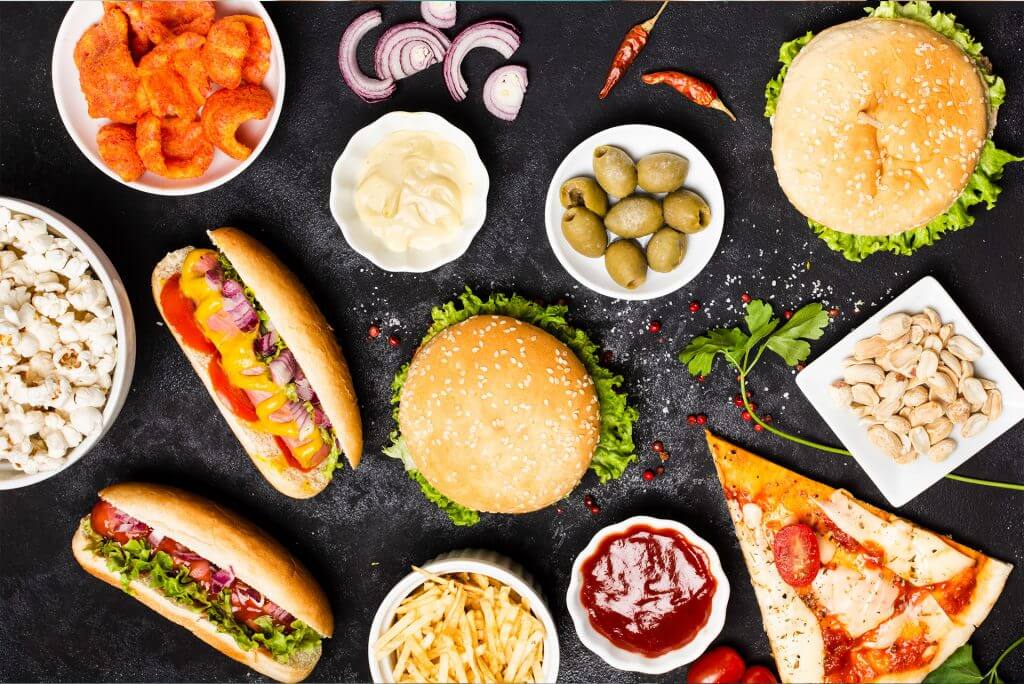What makes a food junk?

This image was released by the National Cancer Institute (UK), an agency part of the National Institutes of Health, with the ID 2458
Two new studies last month have started to expose the link between the so called “ultra processed foods” and poor health. While a lot of us already wondered about food packets that sounded like a science experiment there hasn’t been much evidence to say whether these products are healthful or harmful.
There has long been a recognised link between foods containing excesses of fat or sugar and poor health outcomes but now we can go a step further. It seems that the ultra processed foods, think anything more processed than a loaf of bread or block of cheese, can also increase the risk of serious disease.
For instance a 10% increase in ultra processed food appears to result in a greater than 10% increase in the risk of breast cancer. For people eating four serves of ultra processed food a day the risk of death from all causes increased by a stunning 64%, with an additional 18% increase for each extra serving! Which seems like a lot of death for a few snacks.
These new studies really drive home the message that fresh whole foods are the key to good nutrition. As always, sticking to the outside of the supermarket can help us choose the best foods, the fresh veg, meat and other produce is typically located here. The old adage to keep away from numbered ingredients seems to be very apt, and if there is an ingredient you don’t recognise then it’s probably best avoided.
There is a good new system known as the NOVA system for classifying processed food and it divides them into the 4 groups that are paraphrased below
Group 1 – Minimally or completely unprocessed including plant parts like leaves stems roots or fruits, animal muscles, offal eggs or milk, fungi algae and water. Things like seeds can have their shells removed and be crushed and still be considered unprocessed.
Group 2 – Processed ingredients, these are derived from group 1 foods and rarely compose the bulk of the meal. They are things like salt butter, oil and other cooking fats. They can boiled stewed or preserved to add to group 1 ingredients to make a meal more enjoyable. Processes include pressing, drying
Group 3 – Processed foods, like bread, cheese, canned good such as fish, vege’s and fruit in syrups. These are made by adding salt sugar or oil to group one foods, they are eaten by themselves or more commonly with a mix of group one foods. These processes usually increase the lifespan of group 1 foods.
Group 4 – Ultra processed foods, this group includes what I think of as the classic naughty foods. Soft drinks, packaged sweet and savoury snacks like chips, biscuits and cookies. A lot of the ingredients have names like maltodextrin, invert syrup, high fructose corn syrup, soy protein isolate, casein and lactose. These are typically components of other foods that have been isolated and recombined. They typically enhance or imitate other flavours. The processes involved have names like hydrolysation, hydrogenation, extrusion and moulding. These processes are typically things that can’t be replicated in your own kitchen.
We all benefit from eating a fresh and varied diet so sticking to the 5 veg and 2 fruit per day in the health guidelines will help a lot. Avoiding processed meats, and things like sodium nitrate or nitrite are likely to be best. Other potentially harmful things to look out for are plastics containing bisphenol-A (known as BPA) and the whitening agent titanium dioxide.
While all this may seem obvious to the average health conscious person it is important for doctors to have the evidence, it allows us to keep making the most efficient recommendations for our patients health.
If you want to read more about the classification system or about the two new studies on the topic they are listed below.
https://www.bmj.com/content/365/bmj.l1949
https://www.bmj.com/content/360/bmj.k322
https://world.openfoodfacts.org/nova

Hi, I’m Michael; Chiropractor, Dad, science enthusiast, active weightlifter and keen sportsman. I work with busy and active people who are struggling with pain to find relief from their symptoms so that they can return to an active lifestyle, get through their work day and their workouts without having to pop a pill so that they can feel happier and healthier in their body.

